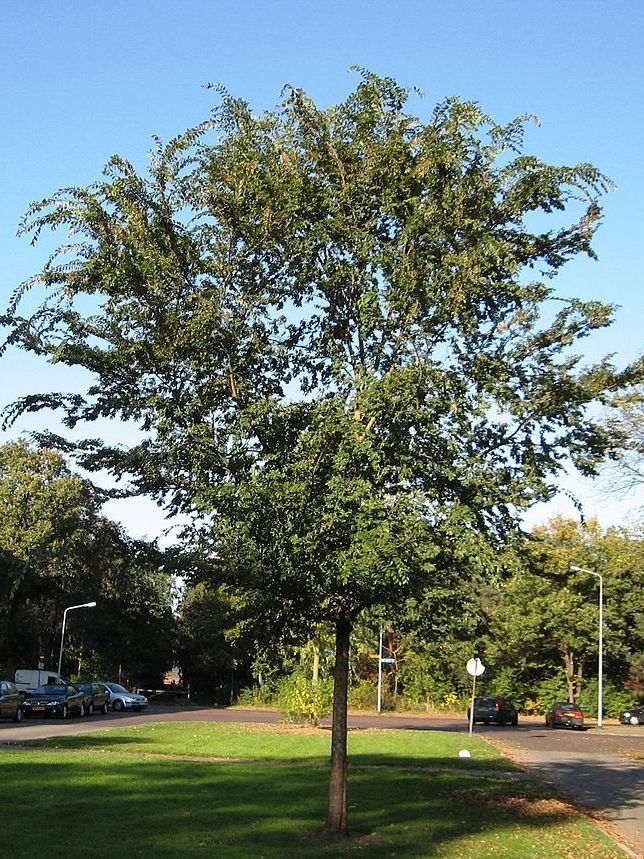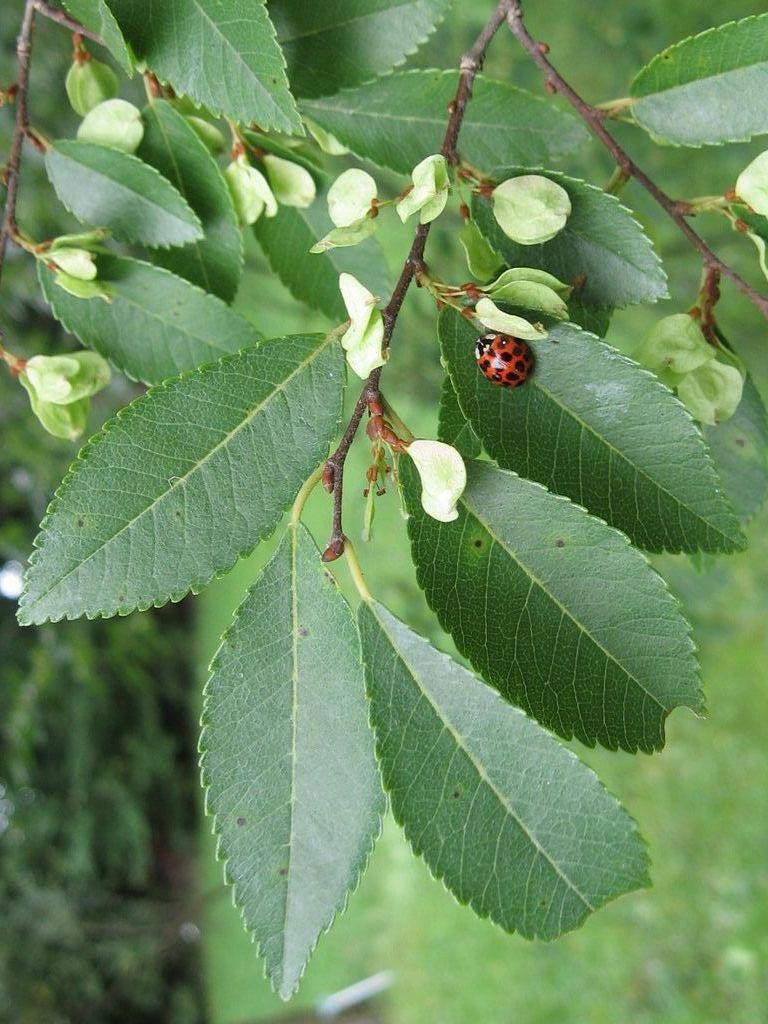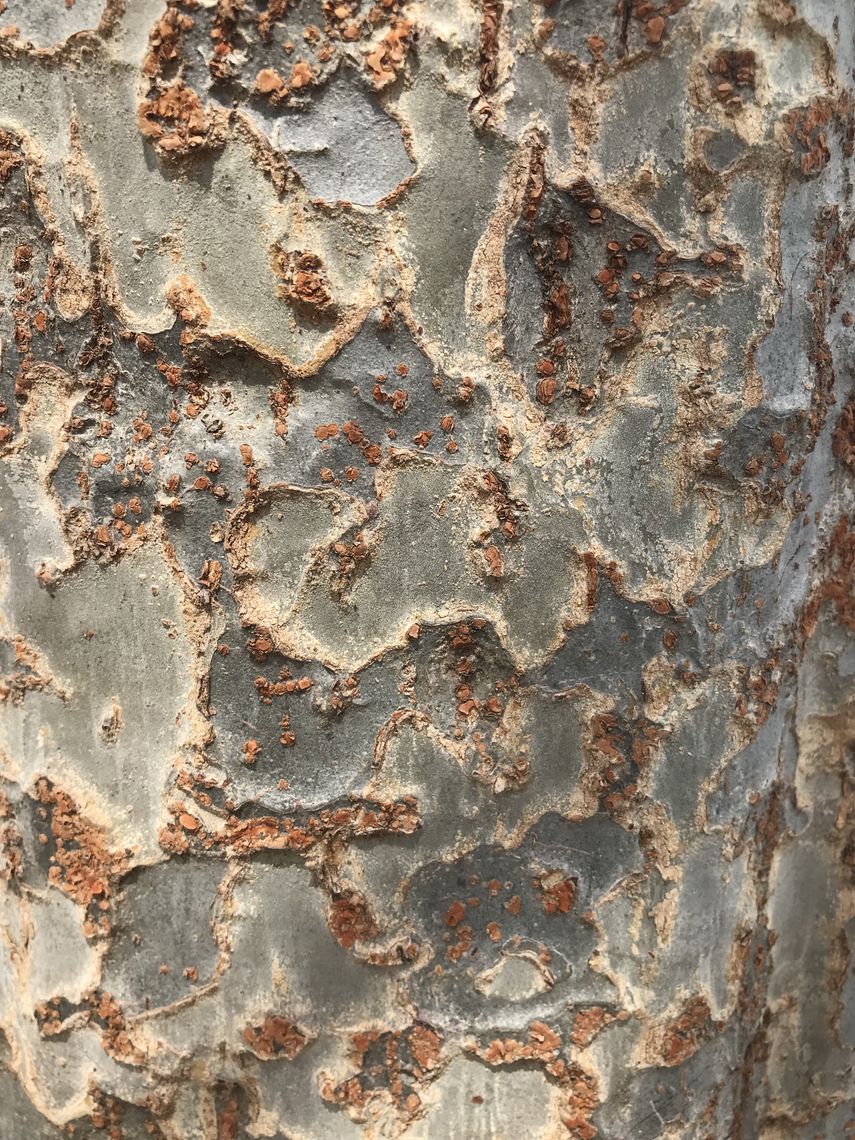Chinese Elm (Ulmus parvifolia)
The Chinese elm, also called lacebark elm, stands out from other elm species for multiple reasons. Its leaves are of the usual shape (oval-pointed and toothed), but are much smaller than regular elm leaves. These leaves turn yellow or burgundy in the fall. Second, this tree has flakey bark, that creates spots of gray, orange, brown, green, and cream, giving the trunk a lace-like look. Lastly, unlike other elm species, the Chinese elm has a good resistance to Dutch elm disease, and so is becoming more popular to use. This tree attracts birds.
Family: Ulmaceae (Elm)
Characteristics: The leaves, between three-quarters of an inch and 2 inches, have a pointed-oval shape and are leathery, toothed and dark green. In the fall, leaves turn yellow to burgundy. Elm trees produce samaras (double winged seeds). The bark flakes, revealing patches of gray, orange, brown, green, and cream. This tree has a rounded shape and long, slightly drooping, branches. It grows 40-50 feet high and wide.
Foliage: Deciduous (leaves lost seasonally)
Geographic Origin: China, Korea, Japan (non-native)
Cultivation Notes: Requires medium maintenance. Does best in full sun, though can tolerate part shade. Prefers moist and well drained soils, though can adapt to many different soil types. This tree is resistant to Dutch elm disease.
Number on Campus: 24
Sources: Dirr, Morton Arboretum, Missouri Botanical Garden



